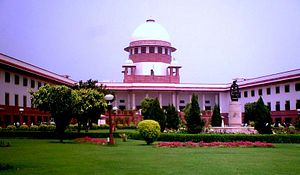In countries like India and the United States, activists frequently complain about judicial activism: judges are said to be guided by political considerations in interpreting the law. Certainly, judicial activism is more plausibly a danger in countries that follow common law systems derived from England, where judicial precedents are given more weight than in civil law systems where legislatures codify laws, which then take precedence over judicial interpretations.
Does India have one of the democratic world’s most unaccountable judicial branches? The issue of judicial accountability has been the matter of great debate in India over the past two decades. No country in the world has reached the extreme of judicial power that India has.
As in most other democratic countries, judges in India were initially appointed by the government, after consulting with the Chief Justice of the Indian Supreme Court. However, many politically-biased judges were appointed, leading to the establishment of an extra-constitutional “collegium system” in which only judges could appoint other judges, placing India’s judicial branch outside of the checks and balances of the legislative and executive powers in the country. The collegium itself is made up of three to five senior judges who can consult with the government, which can only exercise its power by sending a proposed appointee back for reconsideration. However, “if the collegium reiterated its choice unanimously the government would have to appoint that judge.”
This practice was rationalized in a strange manner, one which was not laid out in the Indian Constitution. In 1993, the Supreme Court held that since the independence of the judiciary was part of the basic structure of the Constitution, it could not be compromised through executive or legislative interference in the appointment process. Therefore, only the judiciary itself could appoint judges. The basic structure doctrine has been used by the Supreme Court to prevent numerous constitutional amendments, despite there being no stipulation for this concept in either the original Indian Constitution or in the works and thought of its founders. In a 1951 Supreme Court case, the court held that no part of the constitution was unamendable.
While there is no doubt that corruption and nepotism are problems in India to be guarded against, especially by the branch of government whose job it is to upload the law, it would be exceedingly strange for a branch of government to be completely unaccountable by appointing its own successors without public input. Therefore, all major Indian parties agreed unanimously to curtail the collegium system last year with the passage of the ninety-ninth Constitutional Amendment Act, 2014 in the Indian parliament, which was subsequently ratified by state legislatures. The amendment created the National Judicial Accountability Commission (NJAC) which stipulated that “the chief justice of India, two senior-most judges, the union law minister and two ‘eminent persons’ [would be] trusted with the authority to finalise appointments.”
However, the Supreme Court invalidated the NJAC in a ruling in a 1,030 page ruling in October, and the collegium system endures. However, as consolation, in December the Supreme Court came out with a list of guidelines to improve the collegium system, and asked the central government to finalize a “memorandum of procedure (MOP) in consultation with the chief justice of India.” While many of the proposals by the government and judiciary aim at improving communication between the two and increasing oversight, the main problem of there being a lack of judicial transparency and accountability remains. As long as judges appoint new judges, the system perpetuates itself, making it increasingly more difficult for Indian governments to prevent judges–many already issue directives that are usually the prerogative of the cabinet or parliament–from obtaining a role in governance that far exceeds the role normally played by a judicial branch in most countries.
































